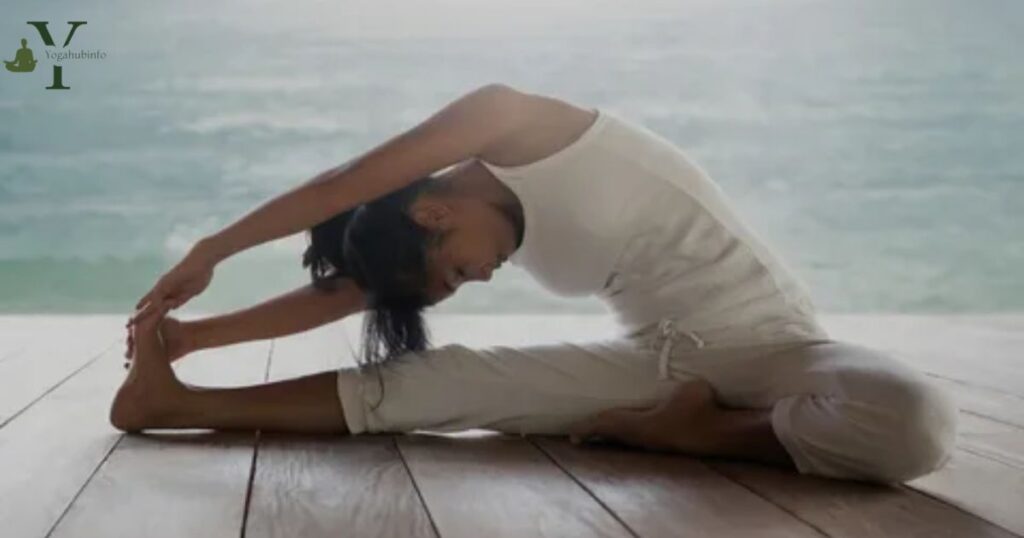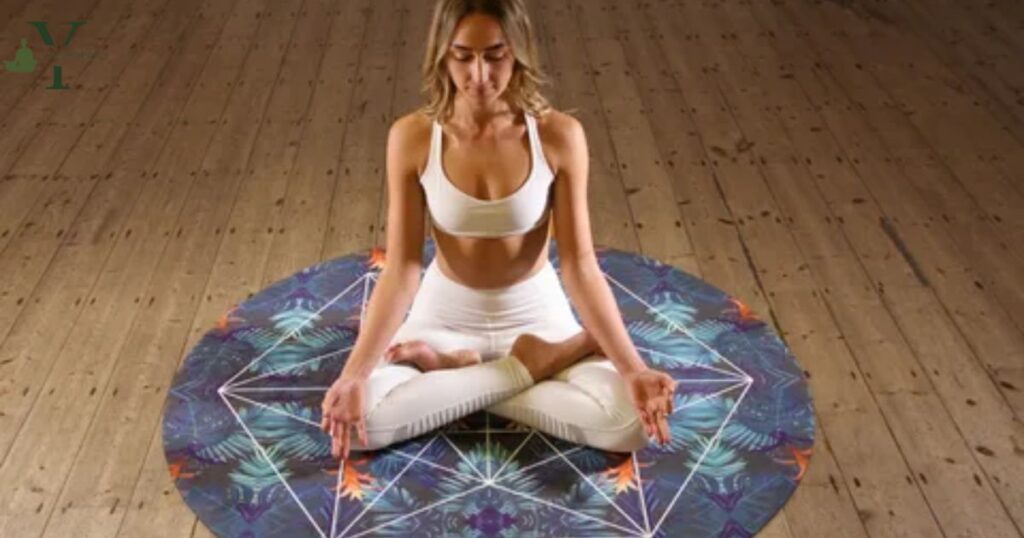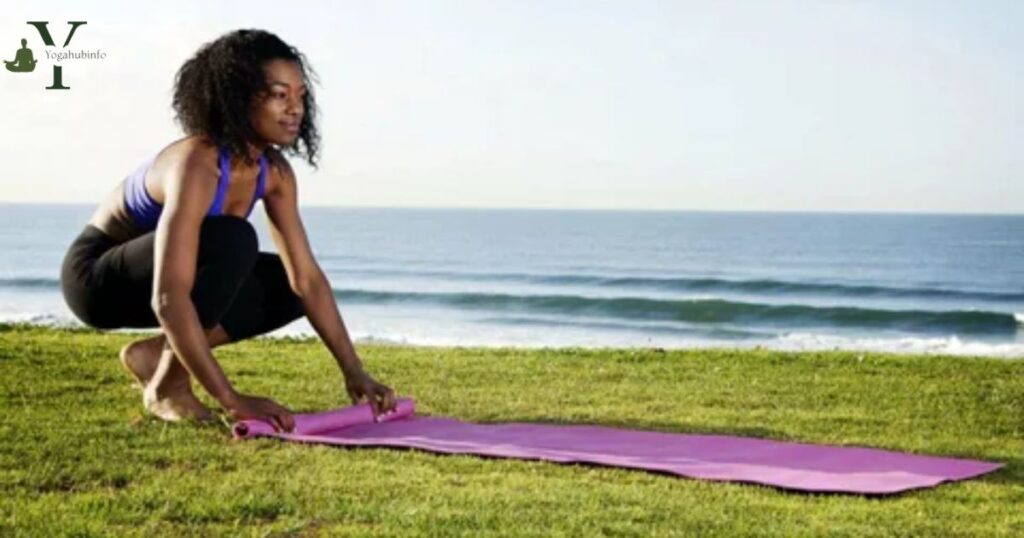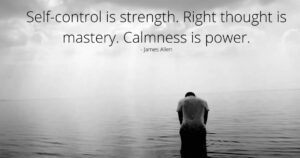When a yoga mat is unavailable, alternatives can be used. A thick towel or blanket provides cushioning for yoga poses. Non-slip rugs or carpets offer stability during exercises. Choosing a comfortable and stable surface is key for a successful yoga practice without a traditional mat.
Tired of the same old yoga mat? Explore exciting alternatives for a comfortable practice. Discover innovative options that elevate your yoga experience beyond the traditional mat. Upgrade your routine with these unique alternatives – a new way to find balance and harmony. Say goodbye to the ordinary and step onto a path of refreshing yoga exploration.
When lacking a yoga mat, opt for a non-slip surface like a carpet or grass. A beach towel or blanket can serve as a makeshift mat for added comfort. Explore using yoga socks or practicing barefoot to enhance grip. Improvise with household items like a folded blanket or a rug for a supportive practice.

A Yoga Mat Might Not Be Necessary?
Certainly! Here’s a table discussing the pros and cons of using a yoga mat:
| Aspect | A Yoga Mat Might Not Be Necessary |
| Pros | |
| 1. Natural Surfaces: | Practicing yoga on natural surfaces like grass or sand provides a direct connection with the earth and may enhance grounding. |
| 2. Improved Balance: | Without a mat, your body engages more muscles to maintain balance, potentially improving overall stability. |
| 3. Cost: | Saves money as you won’t need to invest in a yoga mat. |
| 4. Space and Portability: | Easier to practice yoga anywhere without the need for carrying a mat. |
| Cons | |
| 1. Hygiene Concerns: | Direct contact with the floor may raise hygiene concerns, especially in public spaces. |
| 2. Comfort: | A mat provides cushioning, making it more comfortable to practice various poses, especially for those with joint issues. |
| 3. Slippery Surfaces: | Certain surfaces may be slippery, making it challenging to maintain proper grip during poses. |
| 4. Insulation: | A mat provides insulation against cold or hot surfaces, offering a more comfortable practice environment. |
A yoga mat might not be necessary for your practice. If you’re practicing on a carpet or a soft surface, you may find it comfortable enough without the need for a mat. Consider the environment you’re in and how your body feels on the surface.
Explore Alternatives
There are alternatives to traditional yoga mats. Blankets, towels, or even grass can provide a sufficient barrier between you and the floor. Experiment with different surfaces to find what works best for you. It’s about finding a balance between comfort and stability.
Listen to Your Body
The need for a yoga mat depends on your personal preference and how your body responds during practice. Some people prefer the added cushioning, while others enjoy the direct connection with the ground. Listen to your body, be mindful of your surroundings, and choose what enhances your yoga experience.
If I don’t have a yoga mat, what can I use?

If you find yourself without a yoga mat, don’t worry – there are alternatives! Many everyday items can serve as a makeshift yoga surface. Whether you’re at home or in a park, improvising is possible.
Household Alternatives
Look around your home for substitutes. A thick towel or blanket can provide the cushioning you need. Even a carpeted floor can work well. These options offer support and comfort during your yoga practice without the need for a traditional mat.
Outdoor Solutions
If you’re outdoors, nature can be your yoga mat. Grass or a sandy beach can be surprisingly comfortable surfaces. Just be mindful of the surroundings and choose a clean and level spot. Adapting to your environment can make your yoga practice flexible and accessible anywhere you go.
Without a mat, how do you do yoga at home?
Yoga at home can be enjoyable, even without a mat. Find a soft and clean surface, like a carpet or rug, to practice your poses. This ensures comfort and prevents slipping during your yoga routine. No need for fancy equipment – just a clear space to focus on your body and breath.
If a mat isn’t available, modify your poses to accommodate the surface. Choose standing or seated poses that don’t require extensive floor contact. Feel free to use a folded towel or blanket for added support under your hands or knees. The essence of yoga lies in adaptability and making the practice work for you, even in the absence of traditional props.
Explore yoga styles that involve minimal floor work, such as chair yoga or gentle flows. These variations make it easier to practice without a mat. Embrace the freedom to improvise and create a home yoga routine that suits your space and preferences. Remember, the most important aspect is connecting with your body and enjoying the benefits of yoga, mat or no mat.
What’s So Special About a Yoga Mat?

A yoga mat may seem simple, but it holds a special role in your practice. It’s not just a soft surface; it provides stability for your poses. The mat grips the floor, preventing slips and ensuring a safe workout. So, what’s special? It’s your reliable foundation for a mindful yoga experience.
Comfort is key during yoga, and that’s where the mat shines. Its cushioning supports your joints and spine, making poses more accessible. The soft material keeps you comfortable on hard floors. Plus, it’s easy to roll out and store, making your yoga routine convenient and enjoyable.
Hygiene matters in yoga, and the mat keeps you clean. It acts as a barrier between you and the floor, preventing direct contact. Most mats are easy to clean, promoting a healthy and germ-free environment. So, next time you unroll your yoga mat, remember it’s not just a piece of rubber – it’s your sanctuary for balance, comfort, and cleanliness.
Towel rolled up
A towel rolled up may seem like a simple thing, but it serves multiple purposes. It’s not just for drying off; when rolled tightly, it becomes a makeshift bolster for yoga or meditation. This portable cushion provides support for various poses, enhancing your practice wherever you go. So, the next time you’re headed to a class or the park, consider bringing a rolled-up towel for added comfort.
Beyond yoga, a rolled-up towel can be a versatile tool. It becomes a lumbar support in a chair, offering relief for your lower back. Its compact size makes it easy to carry, making it a practical accessory for outdoor activities or travel. In its simplicity, the towel rolled up transforms into a handy aid, proving that everyday items can play unexpected, valuable roles in our lives.
Blanket with folded edges
A blanket with folded edges might not be your typical yoga accessory, but it brings a unique touch to your practice. Unlike a rigid mat, the blanket provides a softer and more adaptable surface. The folded edges offer a defined boundary, creating a personal space for your yoga routine. It’s a versatile choice that combines comfort and flexibility, enhancing your overall experience.
Comfort extends beyond the traditional yoga mat with a blanket’s gentle support. The folded edges serve as a visual guide, helping maintain alignment in various poses. Whether you’re practicing at home or in a studio, the blanket adds a cozy element to your sessions. So, consider swapping your mat for a blanket with folded edges to explore a new dimension of comfort and mindfulness in your yoga practice.
Large Piece of Fabric
A large piece of fabric may not seem like much, but it’s a versatile alternative to a yoga mat. Lay it down, and suddenly you have a makeshift exercise space. Its size accommodates various workouts, offering flexibility for different exercises. Whether you’re stretching, doing bodyweight exercises, or simply lounging, this fabric provides a comfortable surface that adapts to your needs.
What makes this large piece of fabric special is its adaptability beyond exercise. It doubles as a picnic blanket for outdoor relaxation or a cozy throw for indoor movie nights. Easily foldable and transportable, it’s a practical solution for impromptu activities. So, next time you’re without a yoga mat, consider the versatility of a large piece of fabric – it’s more than just a covering; it’s a multipurpose essential.
Frequently Asked Questions
- Is it necessary to invest in a yoga mat if I only practice occasionally or as a beginner?
- While beginners can start without one, using a yoga mat helps in maintaining proper alignment, balance, and comfort, which becomes increasingly beneficial as you advance in your practice.
- Can’t I just use a regular exercise mat instead of a designated yoga mat?
- While a general exercise mat may work for some poses, a yoga mat is specifically designed with the right thickness and texture to support the diverse movements and postures in yoga practice.
- Are there situations where a yoga mat might be impractical or unnecessary?
- In certain hot yoga practices or specific meditation sessions, practitioners may choose to go without a mat, but for most yoga styles, a mat serves as a practical and hygienic foundation for your practice.
Final Thoughts
The necessity of a yoga mat remains subjective, as individual preferences and practice environments vary. For some, practicing yoga directly on the floor or a carpet may enhance the connection with the ground, fostering a sense of stability and grounding. This approach aligns with the essence of yoga, emphasizing the simplicity of the practice without the need for specialized equipment.
The absence of a yoga mat encourages practitioners to focus on body awareness and alignment, relying on the innate feedback from the floor. This heightened sensitivity can deepen the mind-body connection and promote a more mindful practice. It challenges the notion that yoga necessitates specific accessories, highlighting the adaptability of the practice to different settings and circumstances.
While yoga mats offer comfort and support, especially in public spaces or on hard surfaces, acknowledging the potential benefits of practicing without one opens the door to a more versatile and accessible yoga experience. Ultimately, whether a yoga mat is deemed necessary depends on personal preferences, comfort levels, and the desired depth of connection with the practice.

Marcus Evergreen, with 8 years of yoga expertise, is the author behind yogahubinfo.com, sharing insights and wisdom in holistic well-being.











